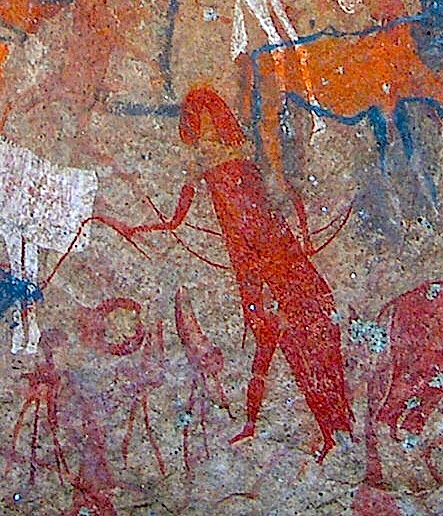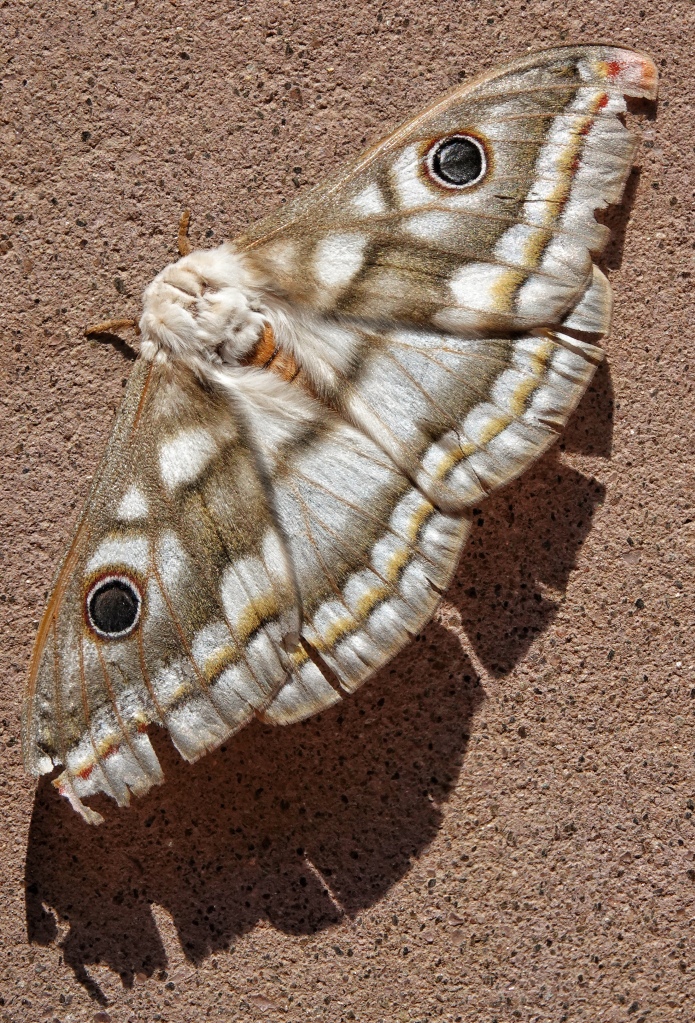While I concur that the onus is on those who interpret rock art to demonstrate what (perhaps special) ability they possess to do so correctly, and consider why anyone should take their interpretations seriously, I think that there is sufficient context to be found in the local mix of archaeology, paleontology and ethnology to accept at least some of these!
Accordingly, in celebration of the thoughtful work of the Namibian archaeologist John Kinahan, and some rock art which has really teased my sensibilities in a remote cave on Daurês (formerly Brandberg), I’ve elected to briefly share John’s thoughts about emperor moth dancing rattles used by the historical hunter-gatherer inhabitants of Daurês.

John considers these rattles to be more than an unusual and accidental find, showing that occultation, as an element of performance not previously considered by scholars of the region, is of fundamental importance to an understanding of the art and ritual practice of southern African hunter-gatherers. The rattles expose a critical weakness in conventional explanations.
Moth cocoons with small pebbles placed inside and strung about the lower limbs, issue a characteristic rustling sound, a rhythmic accompaniment to the ritual dance. Their significance goes much further, for the cocoon represents the stage of occultation when the moth larva is hidden from view. The moth itself is the emergent stage represented by the dancing shaman: once hidden, now apparent.
The moths illustrated in the Daurês rock art panel are very unusual – firstly the illustrative style – moths seen from above to show the emperor ‘eyes’, and secondly their uniqueness – there are apparently no other equivalent rock art illustrations found anywhere – thirdly the likely association of these moths with the use of their cocoons as dancing rattles and hence fourthly the association of these emerged moths with the shaman’s appearance.



John Kinahan’s ‘Namib – the archaeology of an African desert’ was originally published by the University of Namibia Press. It is available from Wits University Press and is also available internationally from Boydell & Brewer.
Leave a comment